The Before Yesterday We Could Fly exhibit at the Met was really interesting. It’s core premise is that we (African Americans) cannot know who we truly are unless we know where we came from. The exhibit explores a possible future where black people were not forced from Seneca Village, a former black settlement that resided in the heart of central park not far west of where the Met museum resides.

The exhibit is home to several artifacts of African origin, and created by Africans and African Americans which have been reclaimed from other periods of time and assembled to create a living space not unlike many other exhibits at the museum.
This exhibit is particularly interesting because there’s a bit of fictional storytelling surrounding it. There is a graphic novel which “explains” how all of these artifacts have been assembled. A time traveler goes to different periods of time and retrieves these artifacts. As a stand alone piece the comic is weak but it does a good job of setting up the exhibit and adds a fun element to the entire experience, which is probably more important for it to do that than be entertaining on its own.
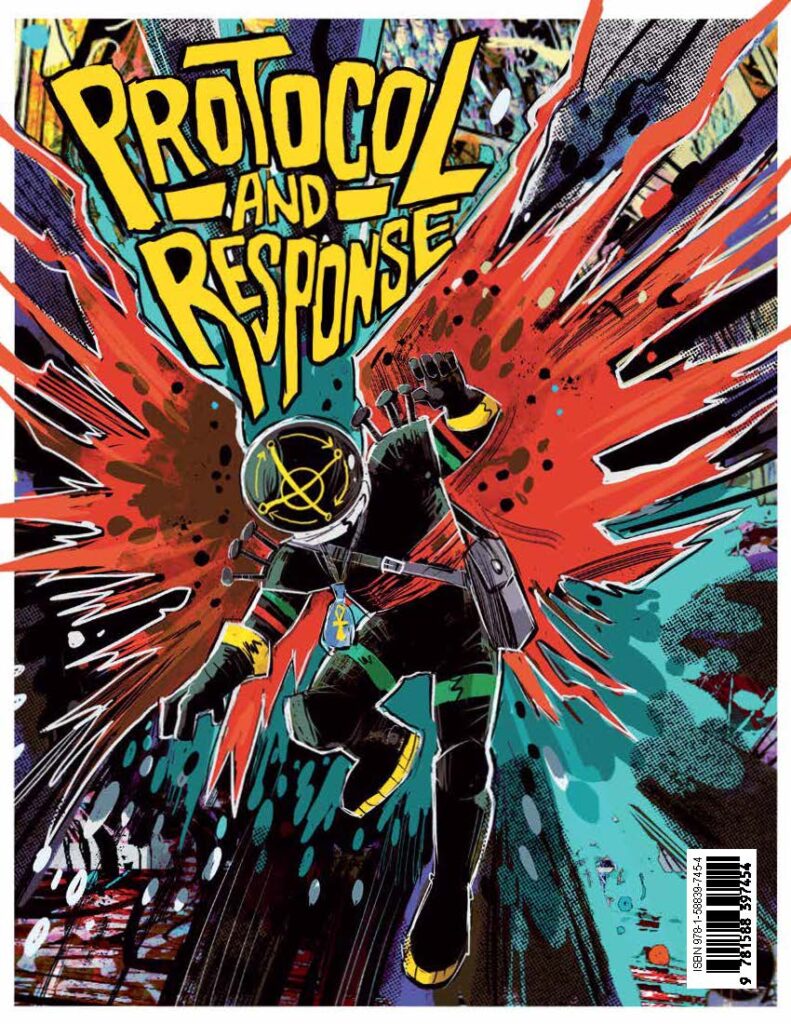
The first thing I saw when I entered the room was this 5 sided television, which unfortunately I could not locate any information on.
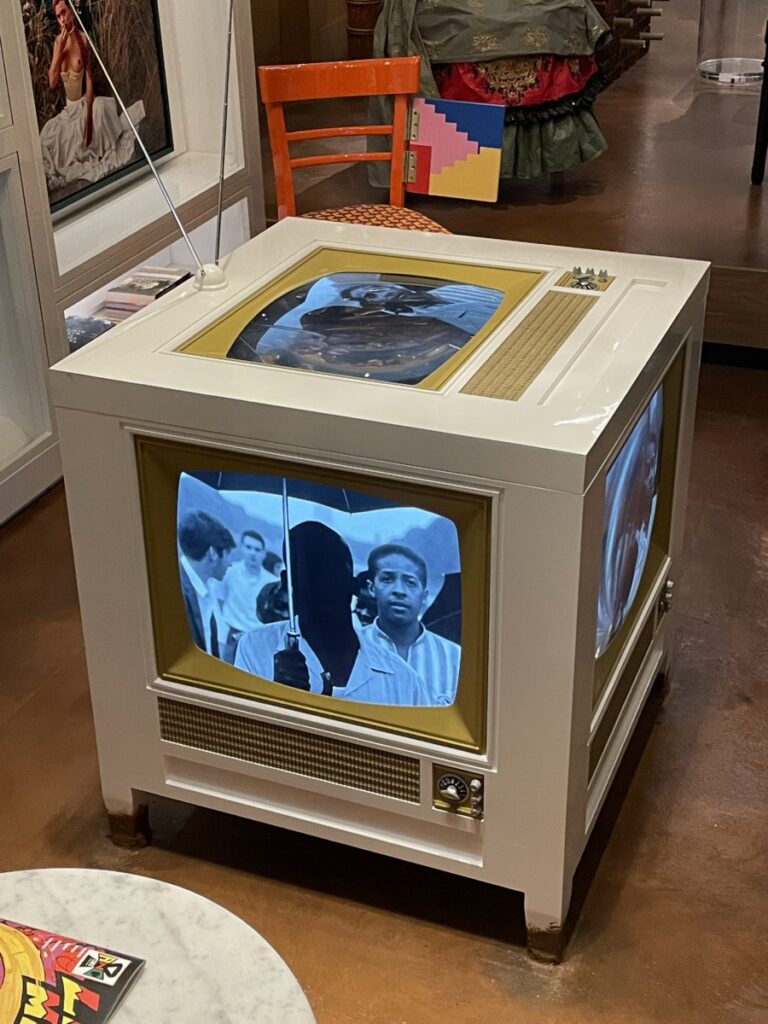
Second I saw these combs. These combs were recovered from Seneca Village and are some of the few artifacts remaining from that time and place. The chainlink above the second comb is a reminder of the African American history of slavery and a reaction to the passing of the 1850 fugitive slave act. The first comb is made of a Malaysian resin, while the chainlink comb was made in 1851out of rubber harvested in West Africa by the India Rubber Comb Company.

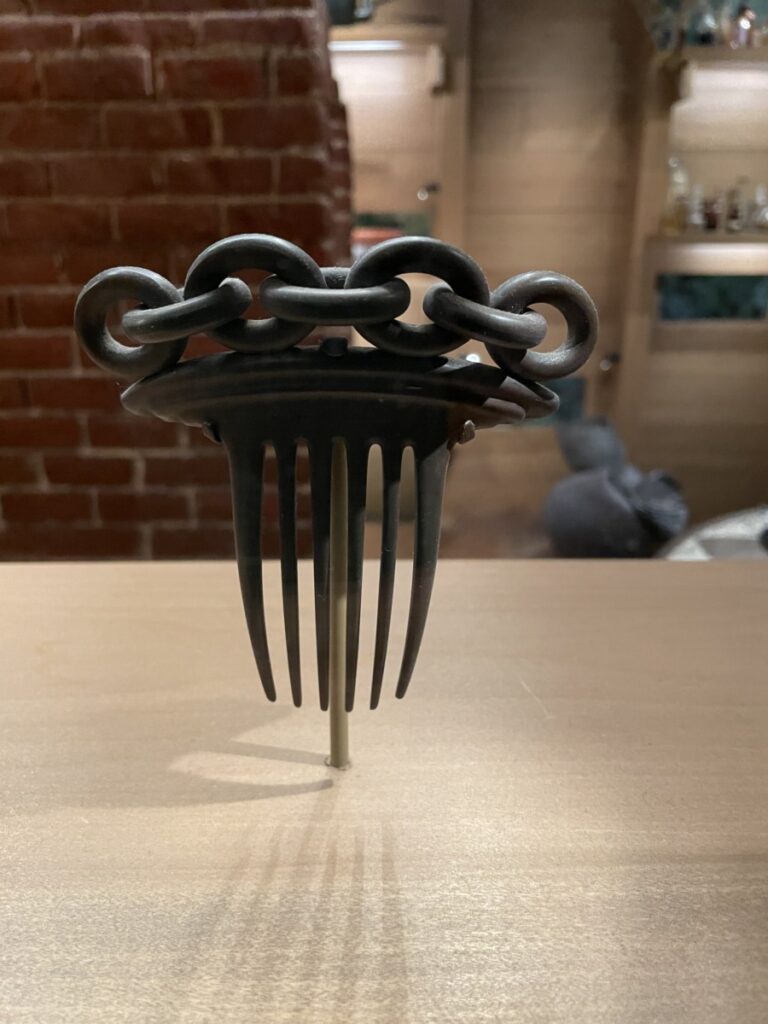
I chose this piece because of the chainlink on the second comb. It’s such a stark look, and seems kind of impractical from a use perspective. They also mention in the exhibit that the comb or afro pic has been a cultural power symbol in the African American community and this falls in line with that.

Third, I chose this chair for one of the reasons mentioned above. When you look at it you can immediately tell its made in the shape of an Afro pic. I found the choice of location and shape for the chair back to extremely interesting. It takes a completely different approach to supporting your back than most chairs do, bearing all of you weight on the center of your back.
Again, I could not locate any signage which described the nature of this chair exactly and who made it.
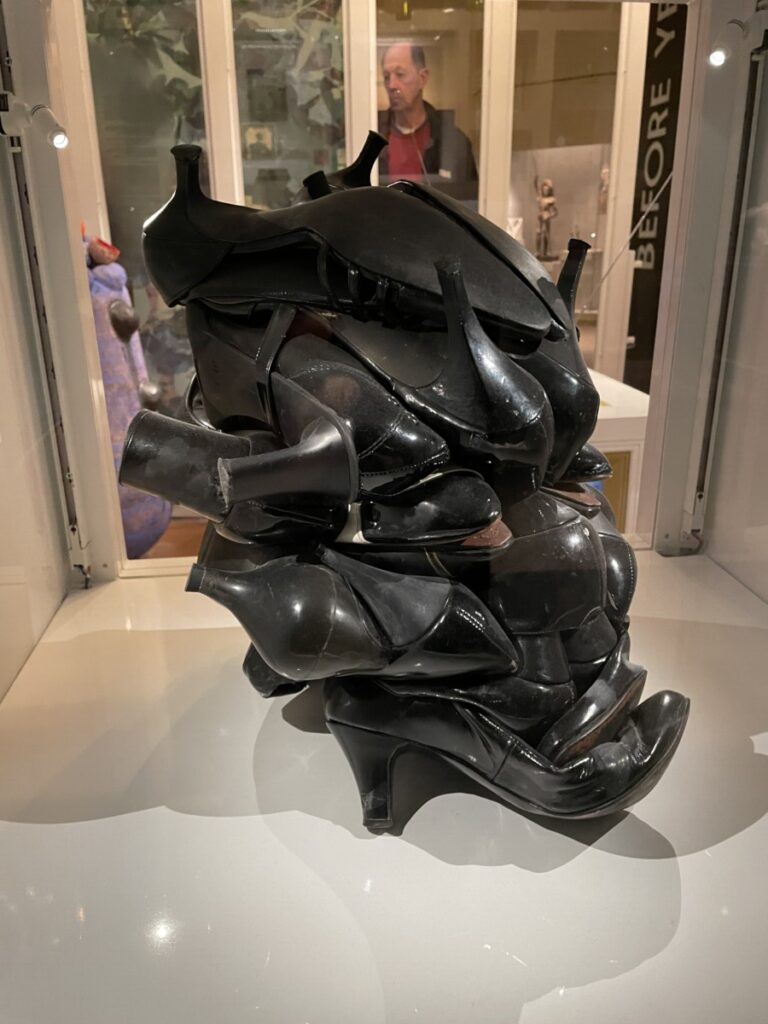
Fourth, I found this sculpture of a mask made out of old shoes to be quite interesting. In the museum you almost cannot see that it is a mask. Even though I had read the description I couldn’t see it, but on my bus ride home I was going over the photos and the face stood out to me clearly. There’s a lot going on with this piece. Willie Cole an African American out of Newark, NJ chose shoes as a metaphor for the Soul (Sole get it?). The piece represents the traveling of not just culture but memories, and all of the places those people who’ve traveled have been. The coming together of the shoes metaphor for how all of us are closely intertwined as Americans, whether we know it or not.
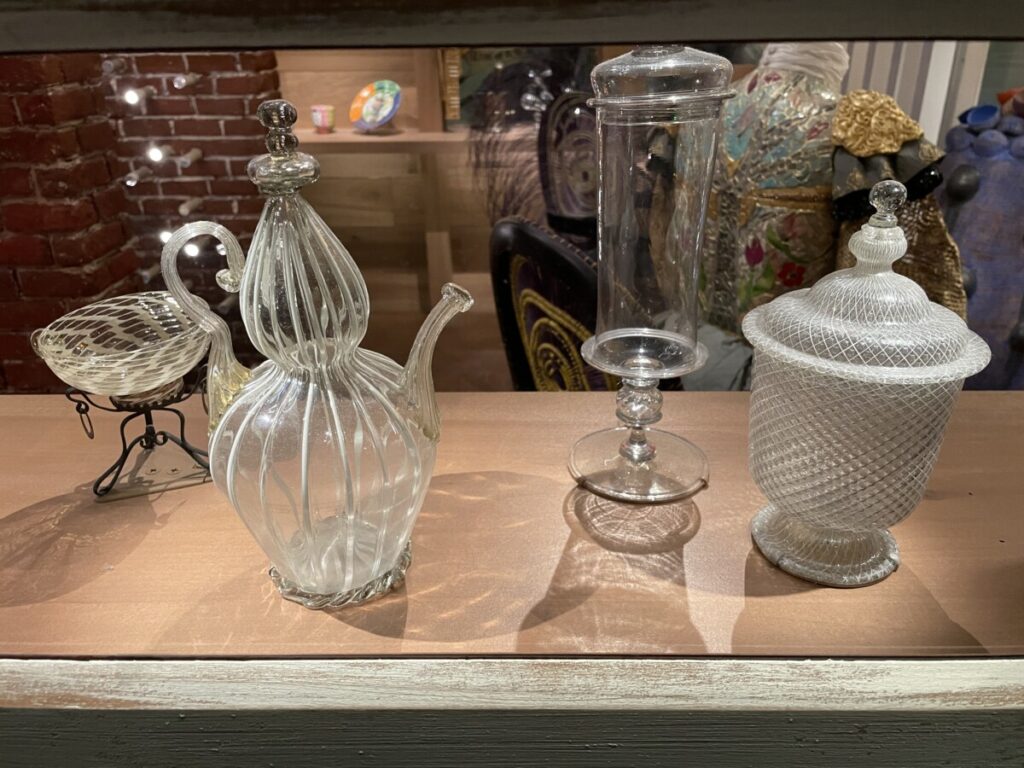
These pieces are made of glass and come from Italy by way of North Africa. The materials were sourced in Northern Africa, and are linked to the slave trade. When juxtaposed against the narrative of the comic and Italy’s history with African slave trade, the idea of a time traveler reclaiming these pieces and displaying them in among others like it in a singular place is a neat little bow on the experience.
Wrap Up
Overall, I do think this is an exhibit that benefits from an in person viewing. The experience of walking around the space and slowly taking in all of the different works cannot be matched by viewing them online and reading about them. I think everyone should read the comic before visiting the space. It helps to set your mind for what you are about to see and ultimately enhances the experience if you let it. Had I not given the comic a chance before hand I may not have enjoyed it as much as I did. There are so many smaller pieces in there but its hard to get to them and learn more because the entire exhibit is blocked off with glass and wood.


